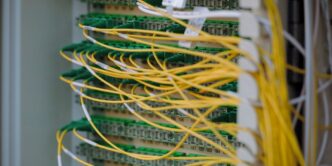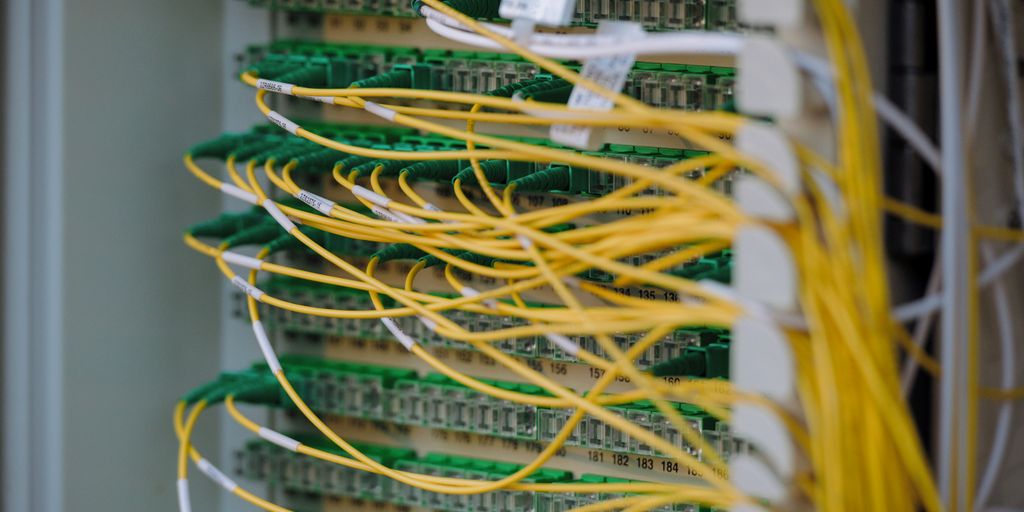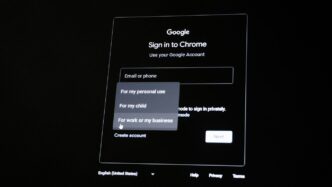Google Cloud Platform (GCP) is a big deal for companies wanting to get ahead in the digital world. It helps businesses do more with their data, use smart tech like AI, and work better with open-source stuff. GCP really pushes for an open cloud, which means it plays nice with different systems and helps with multi-cloud plans. This platform supports all sorts of computing tools and coding languages, making it super flexible for just about any project.
Key Takeaways
- Google Cloud Platform helps businesses move forward with digital changes, using strong data analytics and AI tools.
- GCP makes software development better by improving workflows and making teams work together more easily.
- Google Kubernetes Engine (GKE) helps companies get more out of their money by using a container-first approach and making daily operations smoother.
- Building and protecting APIs on Google Cloud Platform is simple with tools like Cloud Endpoints and Pub/Sub, and it works well with Firebase.
- Google Cloud Platform offers great ways to handle data, from storing it with Datastore to making smart choices with BigQuery, and it supports new tech like generative AI.
Accelerating Digital Transformation with Google Cloud Platform
Digital transformation is a big deal, and Google Cloud Platform (GCP) is a strong contender for helping businesses make that leap. It’s not just about moving stuff to the cloud; it’s about changing how you do business. GCP brings a bunch of tools to the table, from data crunching to AI smarts, all designed to make your operations faster, smarter, and more efficient. Let’s get into the details.
Powerful Data Analytics Capabilities
Data is king, and GCP gives you the tools to rule your data kingdom. BigQuery is the star here, letting you analyze massive datasets with SQL. It’s serverless, so you don’t have to worry about managing infrastructure. You can also use Google Cloud Dataproc for running Hadoop and Spark jobs if you’re into that sort of thing. The point is, GCP makes it easier to get insights from your data, which can lead to better decisions and new opportunities.
Leveraging Artificial Intelligence and Machine Learning
AI and ML aren’t just buzzwords anymore; they’re real tools that can help you automate tasks, personalize experiences, and predict outcomes. GCP offers a range of AI and ML services, including pre-trained models for things like image recognition and natural language processing. Plus, if you want to build your own models, you can use Vertex AI, a unified platform for all your ML needs. It’s like having a team of data scientists at your fingertips.
Seamless Integration with Open-Source Technologies
Google gets that not everyone wants to be locked into a proprietary ecosystem. That’s why GCP plays nice with open-source technologies. You can run Kubernetes, TensorFlow, and other open-source tools on GCP without any hassle. This gives you the freedom to use the tools you love and avoid vendor lock-in. It’s all about flexibility and choice.
Revolutionizing Software Product Engineering

Software product engineering is undergoing a massive transformation, and Google Cloud Platform (GCP) is at the forefront. It’s not just about writing code anymore; it’s about building, deploying, and scaling software in a way that’s fast, efficient, and reliable. Let’s look at how GCP is changing the game.
Driving Innovation in Development Workflows
GCP provides a suite of tools that can really boost innovation. Think about it: developers can now experiment with new ideas without the usual infrastructure headaches. This means faster prototyping and quicker iterations. The ability to spin up resources on demand, test different configurations, and then tear it all down without significant cost is a game-changer. It allows teams to fail fast and learn quickly, which is essential for innovation. Plus, with services like Google Cloud Endpoints, managing and securing APIs becomes much easier, freeing up developers to focus on building great products.
Enhancing Development Efficiency and Agility
Efficiency is key, and GCP offers several ways to improve it. One of the biggest is automation. By automating tasks like testing, building, and deploying, teams can reduce errors and speed up the development cycle. Here’s a quick look at some benefits:
- Faster release cycles
- Reduced manual errors
- Improved code quality
Another big win is the ability to scale resources up or down as needed. This means you’re not paying for idle capacity, and you can handle unexpected spikes in traffic without any issues. It’s all about being agile and responsive to change.
Streamlining Collaboration for Tangible Products
Collaboration is crucial for building great software. GCP offers tools that make it easier for teams to work together, regardless of their location. Real-time document editing, shared code repositories, and integrated communication channels all help to break down silos and improve communication. This leads to better products and happier teams. Plus, with features like platform engineering and integrated version control, managing code and releases becomes much simpler, ensuring that everyone is on the same page.
Unlocking Efficiency with Google Kubernetes Engine

Google Kubernetes Engine (GKE) is a big deal for anyone serious about running containerized applications. It takes the complexity out of managing Kubernetes, letting you focus on building and deploying your apps. Let’s get into how GKE can seriously boost your efficiency.
Maximizing ROI with GKE Autopilot
GKE Autopilot is like cruise control for your Kubernetes clusters. Instead of spending hours tweaking configurations, you just tell Autopilot what you want to run, and it handles the rest. This means less time on cluster management and more time on actual development. It automatically handles node provisioning, scaling, and even security updates. Plus, you only pay for the resources your pods actually use, which can lead to significant cost savings. It’s a win-win.
Container-First Approach for Modern Applications
Modern applications are increasingly built using containers, and GKE is designed from the ground up to support this approach. It makes it easy to deploy, manage, and scale containerized applications. GKE integrates with other Google Cloud services, like Cloud Build and Container Registry, to provide a complete container lifecycle management solution. This means you can automate your build, test, and deployment pipelines, making it faster and easier to get your applications into production.
Optimizing Day 2 Operations for GKE
Getting your application up and running is just the beginning. Day 2 operations – things like monitoring, logging, and troubleshooting – are where a lot of time can be wasted. GKE provides tools and features to help you automate and streamline these tasks. For example, you can use Google Cloud Operations Suite (formerly Stackdriver) to monitor your clusters and applications, set up alerts, and troubleshoot issues. Here are some things you can do:
- Implement automated scaling policies to handle traffic spikes.
- Use rolling updates to deploy new versions of your applications without downtime.
- Set up health checks to automatically restart failed pods.
By automating these tasks, you can free up your team to focus on more strategic initiatives. Plus, you’ll reduce the risk of human error and improve the overall reliability of your applications. It’s all about making your life easier and your applications more robust. Using Google Kubernetes Engine can really help.
Building and Securing APIs on Google Cloud Platform
APIs are super important for connecting different services and apps, and Google Cloud Platform (GCP) has some cool tools to help you build and manage them securely. It’s not just about making things work; it’s about making them work well and safely.
Utilizing Google Cloud Endpoints for API Management
So, you’re building APIs, right? Google Cloud Endpoints can be a real lifesaver. It’s basically a system that helps you manage your APIs directly on Google Cloud. Think of it as a front door for your APIs, handling authentication, authorization, and monitoring. It’s pretty handy because you don’t have to build all that stuff from scratch. Plus, it integrates nicely with other GCP services. I’ve heard mixed reviews, but it’s worth checking out if you’re looking for a streamlined way to manage your APIs.
Real-Time Messaging with Google Cloud Pub/Sub
Need to send messages between services in real-time? Google Cloud Pub/Sub is your friend. It’s a messaging service that lets different parts of your application talk to each other without being directly connected. It’s like a digital post office. One service publishes a message, and any other services that are subscribed to that topic receive it. This is great for things like:
- Event notifications
- Data streaming
- Background processing
It’s scalable and reliable, so you don’t have to worry about losing messages or things slowing down when you have a lot of traffic. It’s pretty awesome how it can handle large amounts of data in real-time.
Seamless Integration with Firebase
If you’re building mobile or web apps, Firebase is a great platform, and it plays well with GCP. You can easily connect your Firebase apps to GCP services like Cloud Functions or Cloud Datastore. This means you can use Firebase for the front-end stuff (like user authentication and real-time databases) and GCP for the back-end processing and data storage. It makes it so easy to build and deploy applications without worrying about infrastructure management. It’s a pretty sweet setup if you’re already using Firebase.
Advanced Data Management on Google Cloud Platform
Data. It’s everywhere, and managing it effectively is a big deal. Google Cloud Platform (GCP) has a bunch of tools to help you store, process, and analyze your data, no matter how big or small. Let’s take a look at some of the key components.
Storing and Accessing Data with Google Cloud Datastore
Google Cloud Datastore is a NoSQL document database that’s fully managed. That means you don’t have to worry about setting up servers or managing backups. It’s designed to automatically scale, so it can handle a lot of data and traffic. It’s great for applications that need to store structured data but don’t require the rigid schema of a traditional relational database. Think of things like user profiles, product catalogs, or game state. It’s pretty convenient for storing and accessing data for applications, offering low-latency access and automatic scaling for various use cases.
Data-Driven Decision Making with BigQuery
BigQuery is Google’s fully-managed, serverless data warehouse. It lets you run SQL queries on massive datasets in seconds. I mean, we’re talking petabytes of data here. It’s designed for analytics, so you can use it to get insights from your data and make better decisions. It’s a powerful tool for data-driven decision making. You can load data from various sources, including Cloud Storage, Datastore, and even other cloud providers. Then, you can use SQL to query the data and create reports and dashboards. Here’s a simple example of how it works:
- Load your data into BigQuery.
- Write SQL queries to analyze the data.
- Visualize the results using tools like Data Studio.
Scalable Solutions for Diverse Use Cases
GCP offers a range of scalable solutions for different data management needs. Whether you’re building a small web application or a large enterprise data warehouse, there’s a tool for the job. For example, if you need a relational database, you can use Cloud SQL or Cloud Spanner. If you need a NoSQL database, you can use Cloud Datastore or Cloud Bigtable. And if you need a data warehouse, you can use BigQuery. The key is to pick the right tool for the job. Here’s a quick rundown:
- Cloud SQL: Fully-managed relational database service.
- Cloud Spanner: Globally distributed, scalable relational database.
- Cloud Datastore: Fully-managed NoSQL document database.
- Cloud Bigtable: Scalable NoSQL wide-column database.
- BigQuery: Fully-managed data warehouse.
And remember, Google takes security seriously, and GCP reflects this commitment. With robust security measures and compliance certifications, GCP ensures your data is protected and that you’re meeting industry-specific regulatory requirements.
Embracing Multicloud and Serverless Architectures
Okay, so multicloud and serverless are kind of a big deal these days. It’s all about not putting all your eggs in one basket and letting the cloud provider handle the heavy lifting. I remember when everything was on-premise, and let me tell you, I don’t miss those days.
Architecting for Multicloud Environments
Multicloud is basically using services from different cloud providers – think Google Cloud, AWS, Azure, etc. Why do this? Well, a few reasons. You might want to avoid vendor lock-in, meaning you’re not stuck with one provider’s pricing or technology. Or maybe you need specific services that one cloud does better than another. The key is to have a strategy. You can manage workloads across multiple clouds with a consistent platform.
Here’s a simple breakdown:
- Best-of-Breed: Use the best service from each provider.
- Redundancy: Distribute your apps across clouds for disaster recovery.
- Compliance: Meet regulatory requirements by using specific cloud regions.
Benefits of Going Serverless on Google Cloud
Serverless is where you don’t manage servers. Seriously. You just write code, and the cloud provider runs it. Google Cloud has a bunch of serverless options like Cloud Functions, Cloud Run, and App Engine. The big win here is cost savings. You only pay for what you use. Plus, it scales automatically, so you don’t have to worry about traffic spikes. It’s pretty sweet. You can [go serverless] and develop, deploy and scale apps in a fully managed environment.
- Reduced Operational Overhead: No servers to patch or maintain.
- Automatic Scaling: Handles traffic spikes without manual intervention.
- Faster Development: Focus on code, not infrastructure.
Running Applications at the Edge
Running apps at the edge means bringing computation closer to the user. Think about things like CDNs (Content Delivery Networks) or running code on devices. This reduces latency, which is super important for things like streaming video or IoT devices. Google Cloud lets you [run applications] at the edge for localized and low latency apps.
- Lower Latency: Faster response times for users.
- Reduced Bandwidth Costs: Process data closer to the source.
- Improved User Experience: Snappier apps and services.
Innovating with Google Cloud AI and Machine Learning
Google Cloud is really stepping up its game in the AI and machine learning space. It’s not just about having the tools, but also about making them accessible and useful for everyone, from seasoned data scientists to those just starting out. I think that’s pretty cool.
Implementing TensorFlow on Google Cloud Platform
Okay, so TensorFlow on Google Cloud. It’s a big deal. It’s like having a super-powered engine for your machine learning projects. You can train models at scale, which is awesome if you’re dealing with tons of data. Plus, GCP offers pre-trained models, which can save you a lot of time and effort. I remember when I first tried it, I was surprised at how easy it was to get started. Dewayne Aguirre mentioned TensorFlow on GCP and I agree, it’s worth exploring.
Customer Engagement Suite with Google AI
This is where things get interesting. Google’s Customer Engagement Suite uses AI to help businesses connect with their customers in a more meaningful way. Think personalized recommendations, chatbots that actually understand what you’re saying, and targeted marketing campaigns. It’s all about making the customer experience better, and AI is playing a huge role in that. I’ve seen some demos, and it’s pretty impressive how far AI has come in understanding human language and behavior. It’s an end-to-end application that combines Google’s most advanced conversational AI.
Exploring Generative AI on Google Cloud
Generative AI is the new kid on the block, and it’s already making waves. We’re talking about AI that can create new content, whether it’s images, text, or even music. On Google Cloud, you can use generative AI to do things like create realistic product images for your e-commerce store, write compelling marketing copy, or even generate code. The possibilities are endless, and it’s exciting to see what people are coming up with. It’s still early days, but I think generative AI is going to be a game-changer in a lot of industries. Google Cloud’s commitment to cutting-edge machine learning is evident here.
Wrapping Things Up
So, that’s the deal with Google Cloud Platform. It’s a pretty big deal for businesses looking to do new things and get better at what they do. It helps with all sorts of stuff, from handling lots of data to making smart computer programs. Plus, it plays nice with other systems, which is a big plus. Basically, if you’re trying to move your business forward in today’s world, GCP gives you a lot of good tools to work with. It’s all about making things easier and helping you build cool stuff.
Frequently Asked Questions
What is Google Cloud Platform?
Google Cloud Platform, or GCP, is a set of cloud computing services offered by Google. It helps businesses and people build, deploy, and manage applications and services over the internet. Think of it like renting powerful computers and software from Google instead of buying and maintaining your own.
How does GCP help with digital transformation?
GCP helps businesses change how they work by providing tools for handling lots of data, using smart computer programs (AI and machine learning), and working with popular open-source software. This makes it easier for companies to become more digital and efficient.
How does GCP improve software development?
GCP makes building software better by speeding up how teams work, making them more flexible, and helping them work together easily. This means they can create new products faster and more smoothly.
What is Google Kubernetes Engine (GKE)?
Google Kubernetes Engine, or GKE, is a service on GCP that helps manage computer programs that run in special packages called containers. It helps businesses save money and run their applications smoothly by taking care of the technical details.
How does GCP handle APIs and messaging?
GCP offers tools like Google Cloud Endpoints for managing how different computer programs talk to each other (APIs), and Google Cloud Pub/Sub for sending messages in real-time. It also works well with other Google tools like Firebase, making it simple to build and secure online services.
What are some ways GCP helps with data management?
GCP provides many ways to store and use data, like Google Cloud Datastore for quick access and BigQuery for analyzing huge amounts of information. This helps businesses make smart choices based on their data.














